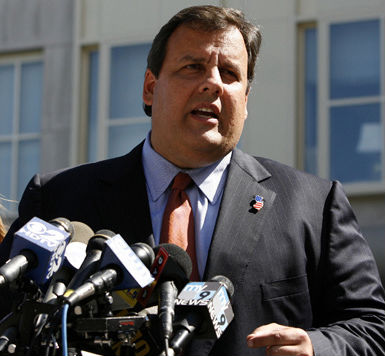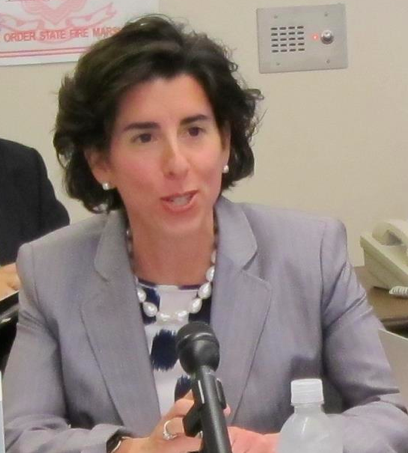This post is authored by Leo Kolivakis and was originally published at Pension Pulse.
Kolivakis is a blogger, trader, economist and consultant — you can find him on Twitter or at his blog, Pension Pulse.
The Canadian Press reports, Canada Pension Plan Investment Board teams up on $2.9 billion stake in U.K.’s top ports manager:
The Canada Pension Plan Investment Board and a British partner are spending about $2.9 billion to acquire at 30% stake in one of Britain’s top ports managers.
The deal with Hermes Infrastructure to acquire a share of Associated British Ports may increase by a further 3.33% subject to pre-emption rights.
ABP is the U.K.’s leading ports group and owns and operates 21 ports in England, Scotland, and Wales as a landlord port owner and operator.
CPPIB and Hermes Infrastructure, part of Hermes Investment Management, are acquiring the stake from GS Infrastructure Partners and Infracapital.
Borealis Infrastructure and Government of Singapore Investment Corporation (GIC) will remain ABP shareholders. The transaction is conditional on customary clearances and is expected to close in the summer.
The CPPIB already has a large presence in the U.K., with about $14.3 billion in investments in several sectors as of Dec. 31, 2014.
Earlier this month, the board bought a portfolio of 40 student residences across the United Kingdom for $2.1 billion.
David Paddon of the Canadian Press also reports, Canada Pension Plan board partners for $2.9B stake in U.K. ports:
The Canada Pension Plan Investment Board and a British partner are spending about $2.9 billion (Cdn) to acquire at least 30 per cent ownership in a company that owns and operates 21 ports in England, Scotland, and Wales.
The board and Hermes Infrastructure are buying their initial stake in Associated British Ports from GS Infrastructure Partners and Infracapital. They could potentially buy an additional 3.33 per cent, which would make them one-third owners of ABP.
Borealis Infrastructure, which is an arm of the Ontario-based OMERS plan for current and retired employees of Ontario municipal governments, will remain one of ABP’s shareholders as well as the Government of Singapore Investment Corp.
CPPIB will be providing a “majority” of the money for the ABP deal, said Cressida Hogg, global head of infrastructure for the Toronto-based fund manager. She declined to be more specific.
The board has bid before on port assets but had been unsuccessful until ABP which Hogg said was a “must-have asset.”
“What we see is that growth is really picking up in the U.K,” Hogg said in an interview from London.
“We think that the volumes of port traffic in and out of the country are going to be sustainable for the very long term and ABP will benefit from that.”
CPPIB invests money that’s not currently required to pay beneficiaries of the Canada Pension Plan.
The Associated British Ports deal is the second major investment in the United Kingdom this month by CPPIB, which manages about $238.8 billion in assets on behalf of the Canada Pension Plan, including $13.1 billion on global infrastructure.
The board already had a large presence in the U.K., with about $14.3 billion in investments in several sectors as of Dec. 31, 2014. Earlier this month, the CPPIB bought a portfolio of 40 student residences across the United Kingdom for $2.1 billion.
Bloomberg reports that Goldman Sachs Group Inc. and Prudential Plc agreed to sell a stake in Associated British Ports, the U.K.’s leading port operator to CPPIB and Hermes. Deutsche Bank AG and Macquarie Capital acted as financial advisers to CPPIB and Hermes.
CPPIB is following the Caisse which just announced a huge deal with Hermes as well, buying a 30% stake in Eurostar, owner of the “Chunnel” rail service between London and Paris.
At this rate, Canada’s large pension funds will pretty much own all of the UK’s major infrastructure assets, which will raise a few eyebrows in England. But hey, if they are selling stakes in prime infrastructure assets, why shouldn’t our big funds be buying them?
What do I think of the Associated British Ports deal? I’m not as enthusiastic as Cressida Hogg on this “must have asset” or on the growth prospects of the UK where inflation just hit zero for the first time in 55 years, and fears of an economic slowdown sent the pound tumbling lower.
Of course, infrastructure assets have an extremely long investment horizon, much longer than private equity and real estate, which is why pensions that pay out long dated liabilities are clamoring to buy stakes in them regardless of current economic conditions.
Still, ports make me nervous at this time. Earlier this month, the Hellenic Shipping News reported, Baltic Dry Index: Is This Powerful Indicator Signaling A Global Recession?:
Although memories of the Great Recession linger, a case can be made that better days lie ahead.
That’s because central banks around the world are pursuing bold stimulus measures. And the United States is looking solid enough for the Federal Reserve to contemplate its first interest rate hike in nearly a decade.
Moreover, gas prices have fallen sharply, which aids consumers, and the stock market is way up, having nearly tripled from recession lows.
But this is no time for investor complacency: indeed a key economic indicator suggests trouble may be brewing just beneath the surface.
The index in question: the Baltic Dry Index.
As a composite measure of worldwide daily shipping prices for commodities like iron ore, steel, cement and coal, the BDI provides insight into manufacturer demand for the raw materials that, literally and figuratively, form the foundation of the global economy.
Typically, a rising BDI coincides with stronger demand from producers, who’ll need raw materials to generate energy and manufacture a variety of things, from roads and bridges to cars and machinery.
This is what makes the BDI such a compelling indicator. It provides information about core economic activity that has yet to take place.
The thing is, the BDI crashed from 2013 highs and now sits around 30-year lows.
The sheer magnitude of the decline should grab every investor’s attention.
My colleague Dave Sterman recently expressed concerns of the growing likelihood of financial distress for dry bulk shippers , which has broad domestic implications, but I am equally concerned about what it means for the global economy.
While the plunge doesn’t necessarily portend a market crash, know that the BDI has shown persuasive correlations with severe market downturns before. It happened in 1999, just ahead of the 2000 dot-com bust. And in 2008, the BDI plunged a stunning 90% in less than half a year. That move occurred soon before the 2008 stock market rout was fully underway.
If the BDI was able to forecast the worst of the past two market crashes, might the current plunge also signify trouble ahead?
I think it may… but with a caveat.
As Dave Sterman recently noted, “Dry bulk shippers ordered a lot of new ships in 2013, many of which started plying the waters in the past 12 months.” In fact, the industry’s new ship orders more than tripled to 947 in 2013, from 267 the year before, because coal imports were expected to rise dramatically.
When the big increase didn’t occur, the shipping industry was left with a major oversupply problem — “too many ships chasing too little market action,” as David puts it. The oversupply has triggered aggressive, industrywide shipping price cuts. For example, the average daily capesize rate, the charge for ships that carry up to 150,000 metric tons of cargo, is now around $6,600, compared with as much as $20,000 per day a year-and-a-half ago.
A similar trend is underway in the oil industry. There, too, crashing prices have much to do with a supply glut (brought on mainly by soaring U.S. production), and the glut makes it harder to tell how much of the crash is due to falling demand. This dilutes oil’s value as a leading economic indicator.
Because of the shipping glut, something similar is probably happening with the BDI.
That said, the BDI’s plunge is likely giving a strong signal about the demand side of the equation. By now, most investors are well aware of the many drags on demand for commodities. European and Japanese economies are in turmoil, a recession is underway in Russia and Canada and Australia may also be entering into recession.
Many analysts consider China to be the single-biggest factor in weakening raw materials, simply because its economy is now so large. No country buys as much iron ore as China, yet its imports of the commodity are only expected to rise 7.5% this year, the slowest pace of growth in five years.
So despite the large supply component that’s in play, I still think the BDI has an important message about the global economy. It’s probably not signaling the dire economic conditions a 30-year low might suggest, but investors should be prepared for the possibility of the global economy slowing down and perhaps even slipping dangerously close to recession.
When it comes to shipping follow the Greeks, they own the largest merchant shipping fleet in the world and know what is going on. In fact, my brother sent me an article yesterday from Robert Wright of the FT, Shipowner warns private equity to stop backing new vessels:
One of Greece’s highest-profile shipowners has warned private equity firms they risk “destroying” markets if they continue to finance new vessels, after excessive deliveries have driven down cargo rates.
Private equity, which until the past few years was only a minor contributor to shipping finance, has invested at least $5bn in shipping every year since 2010 and funded about 10 per cent of deals.
The cash rescued many companies after the collapse in rates and banks’ growing caution towards shipping lending after the financial crisis.
However, much of the new capital was used to order new vessels at cut rates from desperate shipyards, rather than buying existing vessels from other shipowners.
The tactic flooded first the tanker markets and subsequently the market for ships carrying coal, iron ore and other dry bulk. Average charter rates for a Capesize, the largest dry bulk carrier type, were languishing on Monday at $4,301 a day, well below the roughly $13,000 cost of operating and financing a typical ship.
“We welcome private equity in our business,” said Nikolas Tsakos, chief executive of Tsakos Energy Navigation. “But there are 10,000 second-hand ships. For their own good, it would be better if they invested in second-hand ships, rather than destroying the markets they want to invest in.”
Mr Tsakos, who listed TEN on the New York Stock Exchange in 1993 and is also the chairman of Intertanko, the tanker owners’ trade body, nevertheless praised private equity firms’ “cool, logical approach”, which he contrasted with shipowners’ traditional stance.
“We shipowners tend to be very sentimental and stupid,” he said.
He expressed hope that private equity firms might sell assets quickly and at a discount if necessary when they decided to exit shipping, to avoid the prolonged haggling that can scupper sales.
Many private equity investors are unable to escape their shipping investments without recognising substantial losses.“When you’re negotiating with a traditional shipowner, every $100,000 in the price of a ship — the deal can break,” Mr Tsakos said.
TEN, which owns 64 tankers, suffered from a slump in earnings for crude oil and oil product tankers to nearly nothing for much of 2013. But a sharp recovery over the past six months has raised rates for the largest commonly-used crude tankers, known as Very Large Crude Carriers, to around $54,000 a day.
Supply and demand came into balance only after new orders dried up, Mr Tsakos pointed out.
“People stopped ordering ships because there was no future for them,” he said.
The troubles in shipping are only going to be exacerbated by a prolonged global economic slowdown, especially if global deflation materializes. With the China bubble going parabolic, I’m starting to get very nervous on ports and other infrastructure assets which are simply plays on global economic growth.
As always, the pricing of these deals matters a lot, and as I stated above, they are very long-term assets which match well with pension liabilities and they’re easily able to weather through tough economic cycles. But they’re not immune to a major global economic slowdown and there are other risks involved with infrastructure assets (currency, regulatory, political, illiquidity risks).
Also, I’d like to see a lot more transparency on the terms of these deals. What were the multiples paid and just how profitable are the Associated British Ports? Saying we (along with Hermes which put up a lot less than CPPIB) paid $3 billion for a “must have asset” doesn’t exactly reassure me. CPPIB and others should provide the public with a lot more specifics on these multibillion infrastructure deals, especially given the amounts they’re investing.
Finally, the Ontario Teachers’ Pension Plan announced solid returns for 2014, gaining 11.8% last year. I will cover these results later this week after I have a chance to speak with Ron Mock, Teachers’ President and CEO.
Photo by Hilts uk via Flickr CC License









